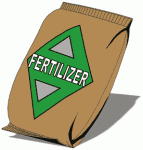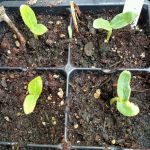 It appears that Aquaponic Gardening in the USA is continuing to gather interest throughout the country, but it’s also facing a great deal of turnover due to the expense and fairly steep learning curve of start up. Many excited newcomers, balk after seeing the high cost of pre made kits, or even the complicated nature of DIY when compared to growing in raised beds or traditional in ground gardens.
It appears that Aquaponic Gardening in the USA is continuing to gather interest throughout the country, but it’s also facing a great deal of turnover due to the expense and fairly steep learning curve of start up. Many excited newcomers, balk after seeing the high cost of pre made kits, or even the complicated nature of DIY when compared to growing in raised beds or traditional in ground gardens.
For those who manage a successful set up, new unforeseen headaches appear with water. Who really knew dechlorination and pH balance would be so time consuming and pricey, or that maintaining a thriving colony of bacteria that continuously convert ammonia to nitrites then nitrates is not as easy as it looks in diagrams or on YouTube.
Oh, let’s not forget about the fish. Waking up to fish floating in your tank is not only expensive, it’s discouraging, especially when you’ve poured a lot of hard earned money into having (Usually) Tilapia shipped from halfway across the country, only to watch them die in the first month or six weeks. In my case, I spent several hundred dollars learning that I could not raise redclaw crayfish here. I’m a slow learner.
The failure rate of ‘commercial’ ventures is even greater. The USA landscape is littered with abandoned Aquaponics systems that were going to make a fortune by selling premium products at premium prices to an ever growing health conscious public, who’ve grown tired of poisoning themselves with traditional supermarket fare.
The truth is, that there are only a relatively few places in America where the demographic that can afford premium prices, the proper climate for successful Aquaponic Farming, and would be entrepreneurs with the fortitude and work ethic to succeed are able to intersect.
I know some awesome people in west central and central Florida who are making it happen. I cannot promote them too highly. But they also work their butts off to make it happen. Many, if not most, Aquaponics dreamers are simply not prepared to pay that price.
A large percentage of the success stories in the more temperate climates are not really commercial ventures at all, but are non profits, dependent on grants, gifts and donations to stay afloat. To be clear, there’s nothing wrong with the model per se, but running a non profit is a whole different animal and requires a different set of skills than a for profit commercial farm. Many would be Aquaponic farmers miss that difference and are destined for failure from the beginning.
Like its older sibling, hydroponics, Aquaponic farming is NOT the future of food production. It has its appeal, it has a niche where it can be successful, but it is not going to begin replacing traditional gardening and farming anytime soon.
If you have stayed with me this far, you probably think I’m some kind of hater or have sour grapes about my own lack of success with aquaponics. If that’s what you think, you would be wrong by a mile. In fact, I am within a few days of setting up my 2016 backyard aquaponics system, and I already have several hydroponic projects going.
What I want to do, is cut through a lot of the boloney and help you be successful, or at least help you set realistic expectations if you’re new to aquaponic gardening, especially if you’re on a budget.
I have no intention of discussing how to begin a commercial aquaponics farm. I understand marketing and sales, because that’s my background, and I’m an entrepreneur to the marrow in my bones, but I have no experience in commercial aquaponics farming, and I will not pretend I do. A successful commercial aquaponics farm is a unique animal. It will require capital, patience and night and day work for a long time. I will tell you that, as I’ve already mentioned, location is mission critical. Out here where my wife and I live, such a venture would be a disaster. If you are really keen on investigating how you might launch a commercial project, email me, or use the comments section and I’ll be happy to direct you to some people in the business who will give you good answers without the bull. This article is for people who want to begin a backyard, basement, or garage system.
First, understand that you can build several raised beds or buy a whole lot of containers for what a backyard aquaponics system is going to set you back. A small ‘off the shelf system’ that will keep a handful of fish and grow a few veggies will cost you over $1000. If you’re going to grow in your garage or basement you’re going to have to add in costs of lighting and water temperature regulation, which can be significant.
If you’re going DIY it can be much cheaper, but still significant. First there is the cost of Fish Tanks and grow beds. Will you use plastic barrels, IBC containers, stock tanks, or some other container? Your cost will be determined by what you choose and where you source it. I have historically used plastic barrels and stock tanks, but I also have some IBC totes for potential future use.
Plumbing costs money. There is the pvc, fittings, valves, hoses, cutting tools to consider, in addition to the costs of a filtration system. Unless you already have an off grid power supply, you’re going to have to find a way to operate the water and air pumps. If you plan to run year round you’ll also have water heating costs.
Now, for the fish. Most of us began with Tilapia. Most of us failed. If you live in in Florida, south Texas, Arizona, Nevada or Southern California, you might get away with it. For most of the USA, however, the only way to successfully raise Talipia, is to heat the water at least part of the year and/or to raise them inside. When water temps get below 50 degrees F, Tilapia are going to die. For example, my inlaws live in west central Florida just south of Tampa Bay. They have wild Tilapia in the ponds and lakes around them. A couple of years back, during a particularly cold spell, tens of thousands of Tilapia died and floated to the surface of the local ponds. Now just imagine what would happen here in north Georgia, or Kentucky, or Indiana, or Montana, or Maine. I think you get the picture. Tilapia can handle a wide range of water quality conditions, but water temperatures are literally a killer.
I was successful growing Tilapia in my basement and garage when we lived in town, but it wasn’t cheap. I gave up very quickly once we moved out here in the country. The cost of heating water in my greenhouse was prohibitive.
On the other hand, I love gardening and many things grew better in aquaponics than they did for me using more traditional methods, so I started thinking outside the Tilapia.
After it became just too expensive to raise Tilapia, I tried bluegill and catfish. They grow great here. I suggest you look into what might work in your area. In many places, especially north of the Mason Dixon, Yellow Perch are a good option. They grow relatively quickly and are extremely tasty.
In our case, my wife doesn’t eat fresh water fish, so it was pointless growing them. If I want some crappie filets, I just go to the lake and catch some. Easy. The last two summers, I’ve grown goldfish. They are 20 cents apiece at the pet store. That price is hard to beat. If you don’t eat fish, if you are on a budget, or if you don’t intend to grow year round, goldfish may be a great option.
Other options include minnows and Koi. Minnows are cheap, easy to raise, and can be used, or sold as bait for crappie and bass fishing. Our ducks like them, too. Koi are often in demand for backyard ponds and can easily pay for themselves.
Koi, minnows, goldfish, bluegill, catfish, and many other varieties can be overwintered if the tanks are deep enough, but my wife and I have decided that growing all year round is not worth it for us. We live in Bartow County Georgia, not Adelaide, Australia.
My systems work this way. I set up my system(s) in April, stock it with goldfish, and grow exclusively lettuces, herbs and greens in raft (DWC) systems. By doing this and using plenty of oxygen in the water, I can keep growing lettuces almost all summer. I can also grow Okra very successfully in rafts. By growing these things aquaponically and hydroponically, I have lots more room in my traditional garden for tomatoes, peppers, melons and etc.
Once fall comes, I will grow some kale and swiss chard. Then once things get too cold for gardening to be fun, I take the system down for the winter. The fish will be fed to the ducks and chickens. It’s that simple.
Aquaponics can be fun and rewarding. To make sure it is, think about where you live. What fish will work where you are? Do you want to eat your fish, or will they be just for aesthetic enjoyment? Will you grow seasonally or all year round? Will you grow outside or in? What’s your budget?
In short, do your homework. It’s the equivalent of measure twice, cutting once. And by all means, think OUTSIDE the Tilapia.
Please email me with any questions or add your comments. After all, we’re in this together.







 It appears that Aquaponic Gardening in the USA is continuing to gather interest throughout the country, but it’s also facing a great deal of turnover due to the expense and fairly steep learning curve of start up. Many excited newcomers, balk after seeing the high cost of pre made kits, or even the complicated nature of DIY when compared to growing in raised beds or traditional in ground gardens.
It appears that Aquaponic Gardening in the USA is continuing to gather interest throughout the country, but it’s also facing a great deal of turnover due to the expense and fairly steep learning curve of start up. Many excited newcomers, balk after seeing the high cost of pre made kits, or even the complicated nature of DIY when compared to growing in raised beds or traditional in ground gardens. 





